The Caspian Sea is an enormous Eurasian inland body of water, sharing borders with five countries. Although called a “sea” due to its massive size, its water is technically brackish with a salinity far below that of seawater. Given its impressive surface area, how deep is the Caspian Sea compared? Read on to find out its average and maximum depths and a host of other fascinating facts.
Where Is the Caspian Sea?
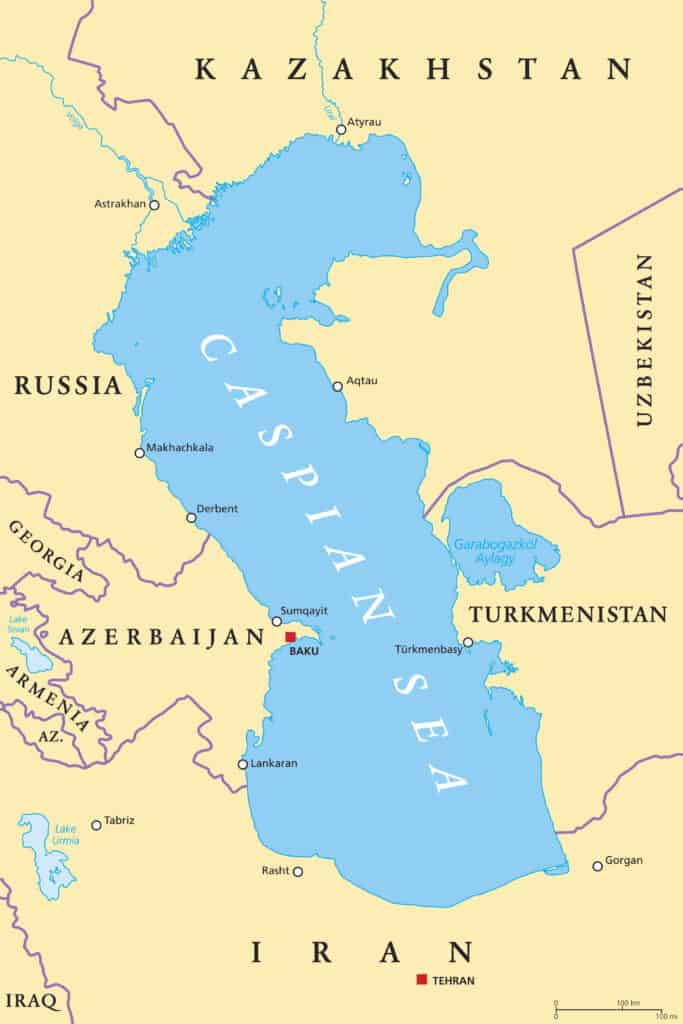
The Caspian Sea shares borders with five different countries.
©iStock.com/PeterHermesFurian
The Caspian Sea lies between Europe and Asia and borders five countries: Azerbaijan, Russia, Kazakhstan, Turkmenistan, and Iran. Three major rivers flow into it: the Terek, Ural, and Volga. It is an endorheic basin, which means it is a drainage basin without any outflow. The only way it loses water is through evaporation.
How Deep Is the Caspian Sea?
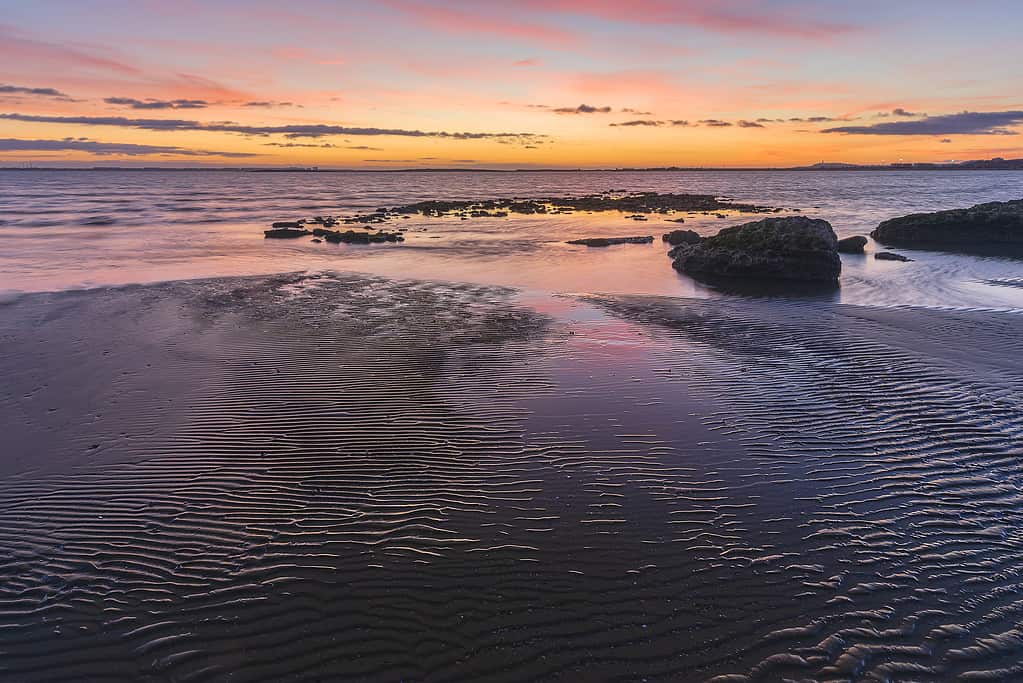
On average, the Caspian Sea is 690 feet deep, with a maximum depth of 3,360 feet.
©Alexmumu/iStock via Getty Images
The Caspian Sea has an average depth of 690 feet (211 meters) and a maximum depth of approximately 3,360 feet (1,025 meters). By surface area, it is the world’s largest inland body of water and the world’s largest salt lake. It is far longer north to south than east to west, with its northernmost end branching to the northeast. Its area is so large that it has three separate regions: Northern, Middle, and Southern.
The following table lists several other notable measurements for the Caspian Sea:
| Measurement | Size |
|---|---|
| Surface Area | 143,200 mi2 (371,000 km2) |
| Maximum Length | 640 mi (1,030 km) |
| Maximum Width | 270 mi (435 km) |
| Maximum Depth | 3,360 ft (1,025 m) |
| Average Depth | 690 ft (211 m) |
| Water Volume | 18,800 mi3 (78,200 km3) |
| Shore Length | 4,300 mi (7,000 km) |
| Surface Elevation | -92 ft (-28 m) |
Animals in the Caspian Sea
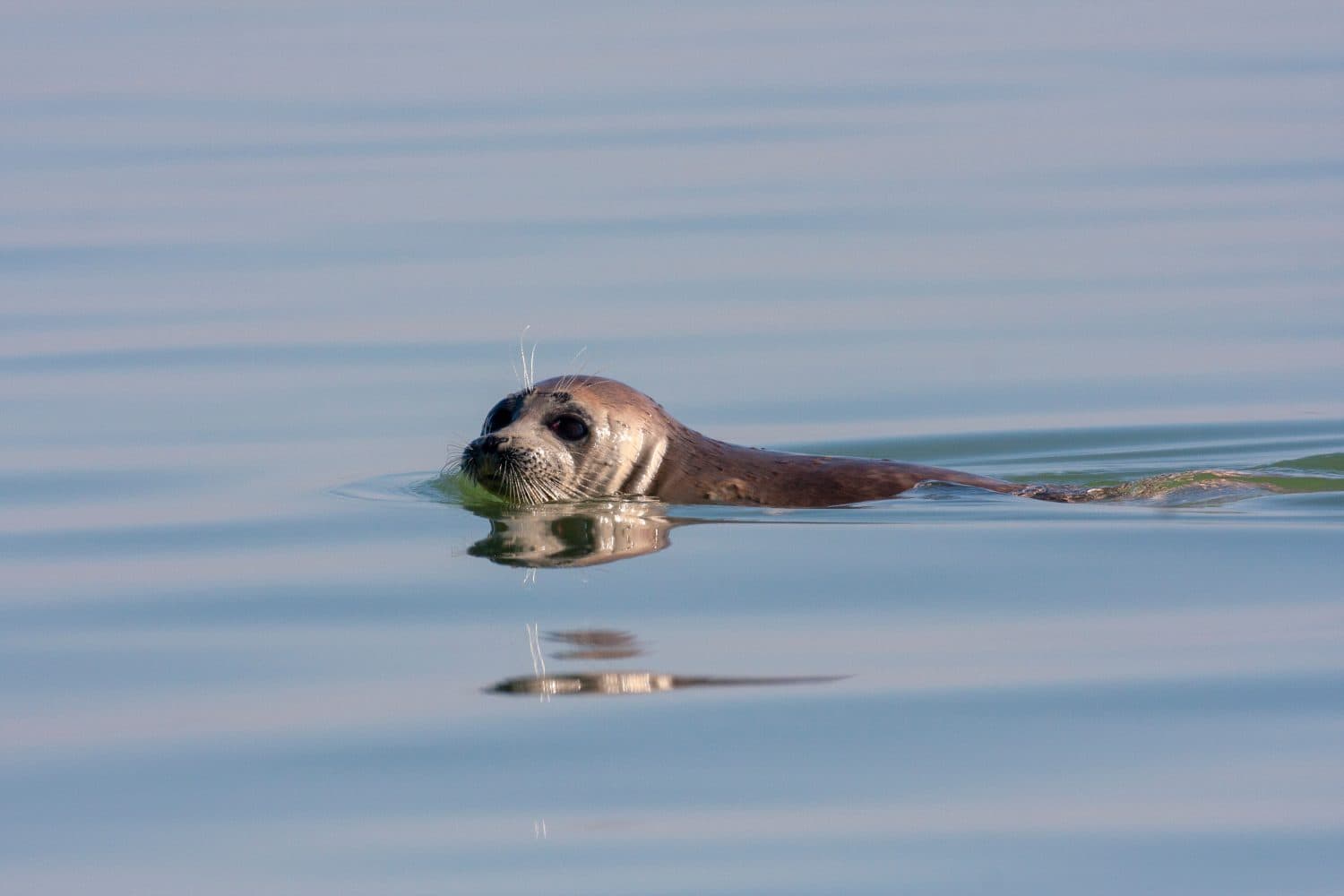
Endemic to the Caspian Sea, the Caspian seal is endangered.
©Agami Photo Agency/Shutterstock.com
The Caspian Sea is home to a wide variety of wildlife, comprising about 850 animal species and over 500 plant species. Many of these are endemic to the area. Unfortunately, pollution and other environmental factors have caused the decline of many species, including the endemic Caspian seal. The region was once home to over one million Caspian seals, but now less than 10% of the original population remains. The IUCN currently lists the species as Endangered.
Below are a few examples of fish living in the Caspian Sea:
Here are a few examples of reptiles living in and around the Caspian Sea:
The endangered Caspian seal is the most famous mammal living in and around the Caspian Sea. The Caspian Sea also has many species of crustaceans, mollusks like the zebra mussel, and other animals like sponges.
Is the Caspian Sea Polluted?
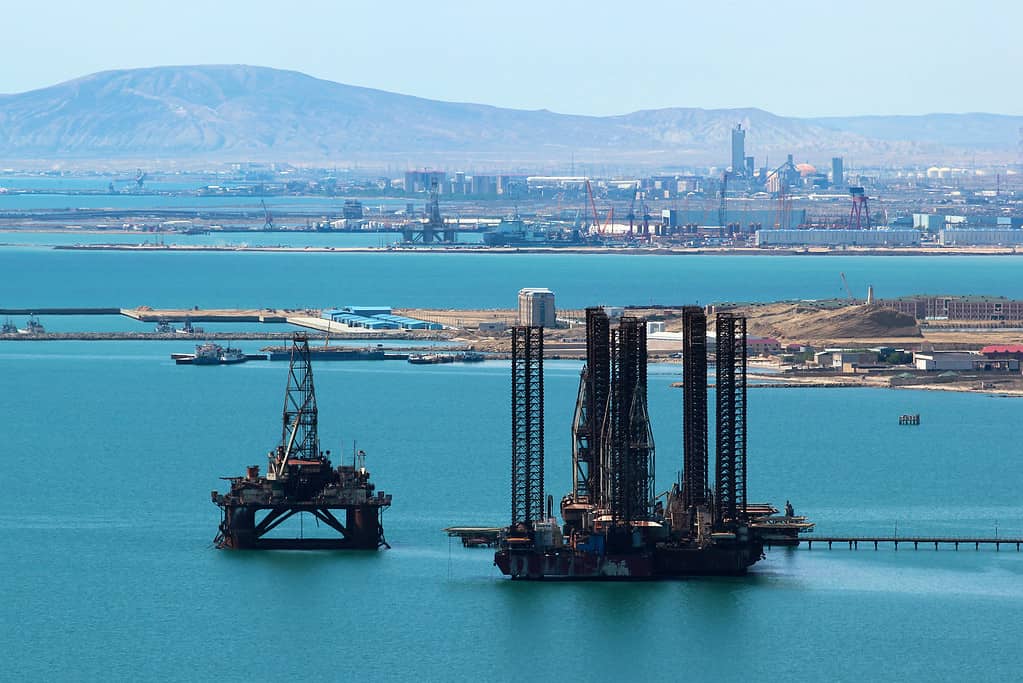
Oil extraction and refining are significant contributors to the pollution in the Caspian Sea.
©aquatarkus/iStock via Getty Images
The Caspian Sea is polluted partly due to sharing borders with five countries. These countries all contribute to the influx of waste. Because the Caspian basin contains large amounts of oil and gas, oil extraction and refining contribute massively to its environmental degradation. Offshore oil fields account for a large portion of this type of contaminant.
Sewage and industrial waste also play a massive part in the environmental crisis taking place in the Caspian Sea. The Volga River is the main conduit for this type of pollution, carrying it in with no chance of an outflow carrying it out. Pollution in various forms, combined with overfishing and lowering water levels due to climate change, poses a severe existential threat to the Caspian Sea and all life within it.
History of the Caspian Sea
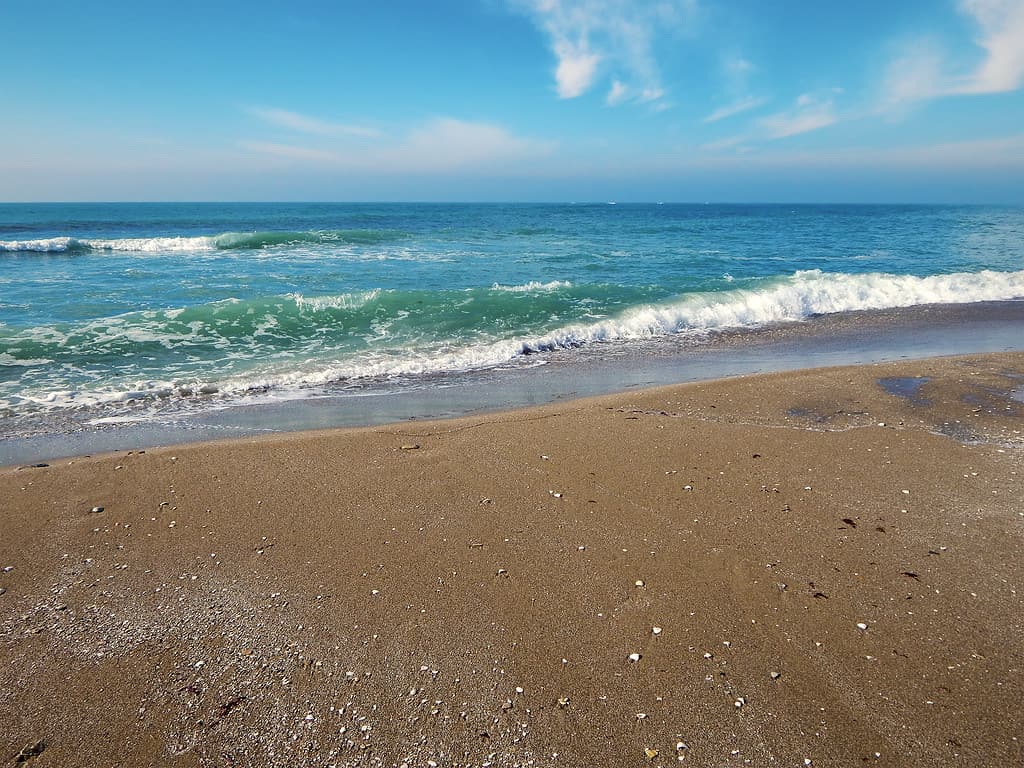
The Caspian Sea once formed part of the Paratethys, a prehistoric Eurasian sea.
©ekipaj/iStock via Getty Images
The Caspian Sea was once part of the Paratethys, a prehistoric Eurasian inland sea. Although the Caspian Sea is about 30 million years old, it first became landlocked 5.5 million years ago. This was due to a downward shift in sea level and tectonic uplift. Its water levels varied considerably throughout its existence as temperature and humidity fluctuated.
Evidence of hominids in the area dates back almost two million years. Scientists have also discovered Neanderthal remains in Georgia, which date back as far as 11,000 years ago. Since then, humans have continued to occupy the region, relying on the Caspian Sea’s natural bounty for their livelihoods. Today, the largest city on the Caspian Sea is Baku, the capital of Azerbaijan. Like the Caspian Sea, Baku lies 92 feet (28 meters) below sea level, making it the lowest-lying national capital in the world. It is also the world’s largest city below sea level.
The photo featured at the top of this post is © MisoKnitl/iStock via Getty Images
Thank you for reading! Have some feedback for us? Contact the AZ Animals editorial team.






